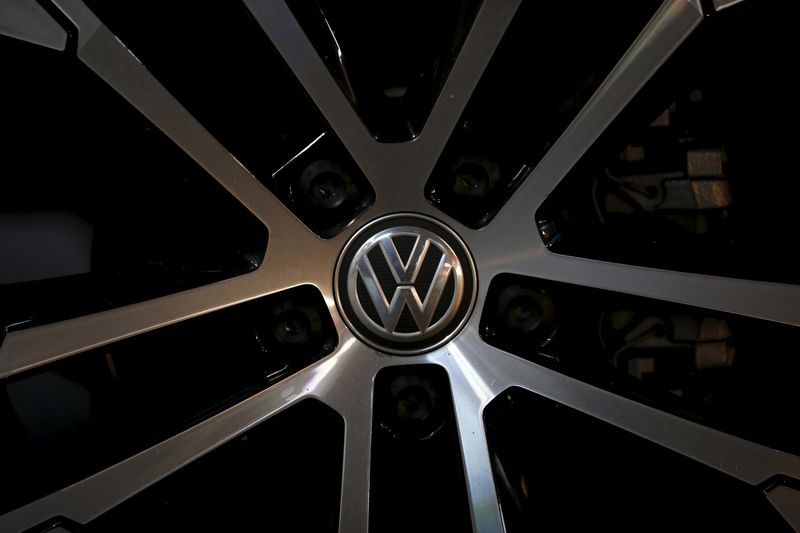© Reuters. FILE PHOTO: Volkswagen electric ID car is seen during a construction completion event of SAIC Volkswagen MEB electric vehicle plant in Shanghai, China November 8, 2019. REUTERS/Aly Song
HEFEI, China/BERLIN (Reuters) – Volkswagen (ETR:) said on Friday it will develop a new platform for entry-level electric vehicles in China and use more local components to lower costs, as the German company seeks to regain lost ground in the world’s biggest auto market.
The new architecture, known as the A Main Platform, will be made specifically to Chinese consumer tastes with regards to the battery, electric drive and electric motor, China chief Ralf Brandstaetter told reporters during a visit to its new EV development and procurement centre in the central city of Hefei.
Chinese new car buyers are younger, tech savvy and like a immersive digital experience from their cars, he added.
Derived from the so-called modular electric drive matrix (MEB), Volkswagen’s existing electric-only platform in use since 2019, it will primarily use Chinese suppliers and should be ready for market in 2026, a third faster than previous platform development times, he added.
The company has said it plans to introduce 10 more EV models globally by 2026 and speed up its time to market for new models from four years to closer to the 2.5-year average for its Chinese counterparts.
China was a very “price-sensitive” market and Volkswagen needed to optimise costs, Brandstaetter said.
“When (EV) volume goes up, … it’s important that we are profitable to be sustainable. Therefore we drive the technologies, the speed and cost efficiency.”
Ludger Luehrmann, chief technology officer of the Hefei centre that is called Volkswagen Group China Technology Company (VCTC) and is developing the platform, said for example that the company was able to lower the price of its dashboard displays by 37% after switching to a Chinese supplier from a global one.
Volkswagen ceded its title as the best-selling car brand in China to BYD (SZ:) late last year, due to intense competition with local EV makers and its heavy reliance on gasoline vehicles whose sales have been declining in the country.
Its top-selling EV, the ID.3, ranked 22nd among EV models by sales in China this year after big discounts boosted its monthly sales to around 10,000 during July to October from an average of 2,200 per month last year, according to industry data.
ENTRY-LEVEL MODELS
Volkswagen is pushing to expand its product range in China to attract customers in the entry- and mid-level segment of EVs in particular, with its current offering priced above that of many Chinese electric-only rivals.
It plans to develop four models priced between 140,000 yuan ($19,400) and 170,000 yuan on the new platform to compete with rivals in a segment dominated by gasoline cars currently, Brandstaetter said.
The cars would be produced by Volkswagen’s joint ventures with SAIC and FAW, he added.
Volkswagen invested around 1 billion euros ($1.1 billion) to build VCTC, which it says is crucial to its ‘China for China strategy’ and will eventually employ over 2,000 people.
The centre’s operations include coordinating procurement to involve suppliers early on, and linking up the development projects of Volkswagen’s three joint ventures in China with SAIC, FAW and JAC Motors.
The centre meant that “time-consuming coordination across time zones with developers in Germany is no longer necessary,” Brandstaetter said.
“We will increase the efficiency of our development processes and be able to shorten the time it takes to bring products to Chinese customers by 30%, while ensuring we are catering to their specific needs.”
Volkswagen in July struck a deal with Chinese EV maker Xpeng (NYSE:) Inc to boost its EV line up. It has two new models under development as part of that partnership that will target mid-level consumers and be produced on an older generation Xpeng platform. Those models are set to be rolled out from 2026.
($1 = 7.2111 renminbi)
Read the full article here





